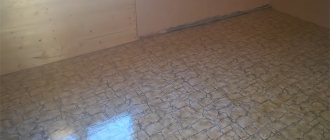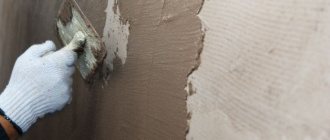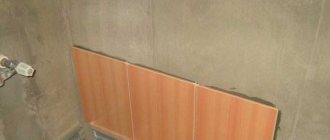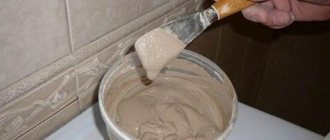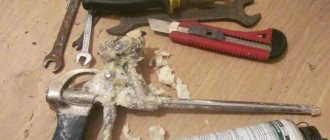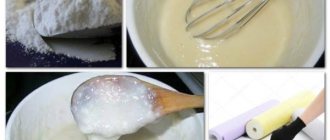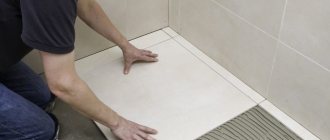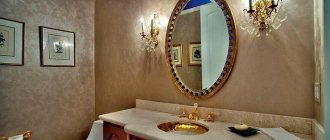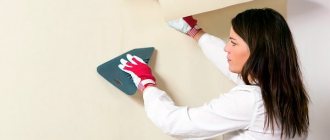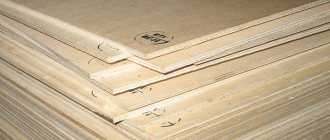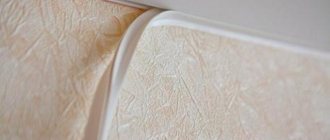What is starch paste
This is a type of glue made from potato or corn starch. Used in everyday life, creativity and production.
Processing the paste with alkali makes it possible to obtain the food additive E1404, which is added to canned food and baked goods. Chemical experiments are also carried out with the substance - reactions to starch and detection of chlorine content in the air.
What does it look like
The consistency resembles cloudy jelly. Slimy to the touch, slightly sticks fingers together. The smell is neutral.
Viscosity and density
These indicators determine the qualitative properties of the substance:
- During the gelatinization process, starch diluted with water acquires viscosity. Potato starch produces a more viscous substance than corn starch. Viscosity depends on many conditions: temperature, composition, preparation technology. For a quality product this indicator is high.
- The density of a substance is the ratio of mass to volume. The paste made from potato starch is denser than that from corn. The less water added to the original powder, the denser the product.
A good paste has high viscosity.
Chemical formula
Starch is a polysaccharide. It consists of amylose and amylopectin. The chemical formula of starch paste is as follows:
(C6H10O5)n
The formula also depends on the additives used to obtain the improved substance. The final substance is a colloidal suspension of starch in liquid.
What is it - starch
Before answering the frequently asked question about how to cook glue from starch, you should clarify the situation a little about this component.
From a scientific point of view, it is a complex carbohydrate produced through the process of photosynthesis of glucose.
This food additive looks like a white powder, so it has an external similarity to flour. It does not dissolve in cold liquid, but when combined with hot water it swells and forms into a sticky mass.
People often use potato powder, because in this vegetable the amount of this mixture of polysaccharides reaches approximately 25%. At the same time, starch “flour” is also extracted from corn, wheat and rice, where its content is almost three times greater, from 64% to 75%.
These are record holders. Surprisingly, the list is huge. Let's list just a few:
- several types of legumes and root vegetables;
- almost all grains and cereals;
- more than a dozen tropical and subtropical plants;
- bananas, acorns, chestnuts.
Where can I use it?
Cooks and crafters are often interested in how to make starch, because the scope of its application is very wide and interesting. The most common use of this powder is cooking. Through starch “flour” people manage to thicken foods and bind liquids. It is often used in the manufacture of jelly, baked goods, creams, sauces, jellies and other food products.
Oddly enough, starch can be used for other purposes. For example, it is excellent in creating molasses, ethanol and various types of adhesives. In addition, experts have found use for it in the pulp industry, where paper is processed and filled with this powder.
Properties of starch paste
Gelatinization is a process that occurs with starch powder when heated in water. Molecules that enter moisture increase in diameter due to the content of amylopectin. The finished solution acquires viscosity, which is of key practical importance.
Paste has the ability to glue materials, which determines its value.
Cooking errors
The quality of the paste depends on compliance with the technology of its preparation. But often beginners make mistakes when cooking and get negative results. The following mistakes prevent you from making a high-quality paste:
- Add dry starch directly to boiling water. The gluten sets instantly, and the mass turns out with lumps.
- Neglecting stirring. To evenly distribute the dry matter, the paste must be stirred intensively and continuously when heated. If you linger for a minute, the mass will turn into a lump.
- Adding dry powder to water. This provokes the formation of lumps. You need to do the opposite: pour water into the starch.
Application
Ease of preparation and safety allow the product to be used in various areas of everyday life and industry.
- Home renovation. Used as a primer and as a replacement for wallpaper glue. Does not leave marks or streaks and can be easily removed if necessary. Apply with an ordinary brush.
- Creation. It is used for papier-mâché as an independent glue or in a mixture with PVA, in kindergartens and primary schools - for crafts and applications.
- Production. Used for gluing corrugated cardboard and in the manufacture of pharmaceutical tablets.
- Health protection. To determine excess chlorine concentrations, starch paste and iodine are mixed: a reaction in which iodine comes to the surface means the presence of dangerous chlorine in the air.
- Garden work. Carrot seeds are planted in the paste.
- Medicine. It is used in case of poisoning as a substance that facilitates vomiting and removes toxins from the body.
Its prevalence and ease of preparation allow the product to be used for a variety of needs.
Starch paste in pharmaceutical production
Added as a binder during the humidification process. Humidification is a technology that is used to form the desired size and weight of the tablet. A 5% solution of starch and water is mixed with syrup, gelatin, and alcohol to bind the tablet substance.
Lugol's solution
Lugol's solution is prepared by mixing iodine, potassium iodide, glycerin and water. It is used for diseases of the upper respiratory tract to destroy bacteria. At home, it allows you to determine the presence of starch in a substance.
If you drop the solution into a starch-containing substance, it will turn blue. This way you can determine the quality of sour cream or flour. If these foods contain starch (which they shouldn't), they will change color.
Sowing carrots in starch paste
The technology improves germination and simplifies the planting process, because carrot seeds are very small and it is difficult to sow them evenly.
To plant carrots in starch paste you will need:
- Sort the seeds by pouring them into salted water. If they fall to the bottom, they will sprout well. A floating seed is not suitable for planting.
- Soak the seeds for several days. The water must be changed every 12 hours.
- Make grooves 2-3 cm deep in the soil, compact the bottom, and moisten.
- Pour the paste mixed with seeds into the grooves.
- Sprinkle with soil in a layer of 1-2 cm.
This planting method guarantees excellent germination of carrots.
Gluing corrugated cardboard
Paste made from tapioca, potatoes or corn is valued as a harmless means for the production of corrugated cardboard. Borax, caustic soda and copper sulfate are added to the composition to prevent the development of mold.
What can it be made from?
Most often the paste is made from flour. Second or third grade flour made from wheat, rye or corn is suitable for this.
The first grade is not suitable; as a last resort, you can use “general purpose” flour. Such requirements are explained by the fact that wholemeal flour has a higher degree of viscosity due to the bran it contains.
A composition made from whole grain wheat flour will have ideal astringent properties. For its characteristics, it even received the second name “wallpaper” and is considered a good basis for preparing an adhesive composition. They are also made on the basis of rye flour, but although it provides good adhesion to the surface, it can leave stains and unnecessary marks. This paste is suitable for wallpaper in dark colors, where the appearance of small stains will not be noticeable, and it is also great for gluing heavy vinyl wallpaper.
To avoid leaving traces, which is very critical when gluing light-colored wallpaper, you can use starch-based cooking recipes. It can be made from potatoes or corn. The composition turns out to be completely transparent, but in terms of adhesion quality it is somewhat inferior to flour-based adhesive.
Depending on the area of application of the adhesive composition, various additional components may be added during its cooking. For example, when making glue for papier mache, you need to add wood glue in the proportion of 75 ml of the component per 0.2 kg of flour. Gelatin, previously diluted with water, is suitable, as indicated on its packaging. This paste makes the surface treated with it more durable.
- To increase the fixing properties of the composition, wood glue or PVA is poured into it. The first ingredient is added to the mixture to treat dark surfaces, and PVA is added to work with light materials.
- To disinfect the mixture and prevent the reproduction of various microorganisms and insects under the wallpaper treated with it, copper sulfate should be added to the paste in a ratio of 10 g per 1 kg of flour. Small pests are attracted to the product by its natural composition.
- If the paste is used to make textile jewelry, you can add a little vanillin or vanilla sugar to it, but not more than 0.5 teaspoon. for 20 g flour. These components will add elasticity and shine to the fabric.
When making glue for children, it is better not to use additives, but to brew a pure composition.
Recipe
You can prepare a starch paste at home. Besides the powder, you only need water.
To make a starch paste for children's creativity, one bag of starch is enough; for repairs you will need more.
- Stir 5 large spoons of starch in a glass of water until smooth.
- Pour 200 g of water into a container and bring to a boil.
- Pour the resulting solution into boiling water.
- Cook with continuous stirring for 3-4 minutes.
The paste must be cooled before use. Can be poured into a bottle or jar.
You can cook starch paste in another way:
- Mix starch and water in a ratio of 1 to 10.
- Cook until boiling, stirring.
- Cool the hot mixture.
- Add additives if necessary.
PVA glue is used as an additive when preparing starch paste (ratio to paste 1:2). Polyvinyl acrylate improves viscosity and bonding properties.
How to cook a quick-drying paste?
Sometimes it is necessary to hang wallpaper in a short time. Dextrin will help improve the quality of the paste.
Advice from the site's experts: if starch is heated for a long time in an oven at a temperature of 160 degrees, it will turn yellow. Yellowed powder that has changed its structure is called dextrin. The starch must be heated for at least two hours.
How to cook dextrin-based starch paste? The recipe for creating a quick-drying paste is simple. Preparation is carried out in several steps:
- It is necessary to dilute dextrin with boiling water at the rate of 1/3 part.
- Then for every 100 grams of dextrin you need to add 30 grams of sugar.
- The mixture is heated over low heat for 20 minutes.
- The finished paste should sit for at least two hours.
The finished glue can be used for wallpapering. It will dry quickly and at the same time hold the wallpaper firmly. It does not contain toxic substances and has no odor at all.
Useful tips
- You can use flour to prepare the paste. It contains up to 80% starch. It is better to give preference to third grade flour.
- It is best to cook the paste in an enamel bucket.
- Starch-based paste is ideal for priming walls and gluing paper wallpaper.
- If you add copper sulfate to the finished paste (at the rate of 1 g per 10 g of dry starch), the glue acquires antiseptic properties. This is excellent protection against insects and mold.
Water repellent additives
Thermosetting additives are used to impart hydrophobic properties. Necessary in the manufacture of corrugated cardboard and products made from it. Improves seam strength and product quality.
The most widely used additives are the CP-88 series. They reduce glue consumption. The use of CP-88 allows corrugated cardboard products to maintain a seam in an atmosphere with high humidity.
In everyday life, such additives are used when gluing wallpaper in damp rooms. When adding the substance, keep the windows open. The quality of the resulting solution is not inferior to expensive wallpaper adhesives.
Glue for wallpaper made from starch at home. How to make wallpaper glue from starch
People have been using paste as a glue for paper for a long time. The instructions for its preparation are simple, and the components are found in almost every home. For this you only need flour or starch. And even today, despite the abundance of all kinds of adhesives on the shelves of construction stores, many still prefer paste. How to make wallpaper glue from starch with your own hands?
Making glue from starch
Paste is a gelatinous mass cooked from flour or starch. This tool is used to perform:
- album bindings;
- when pasting wallpaper, etc.
You can even prepare it yourself at home.
Manufacturers of various types of glue have taken care of a wide range of prices for their products. Therefore, choosing an adhesive composition that suits you not only in terms of its qualities, but also in price is not at all difficult. But even this fact does not affect the wide popularity of the paste. This kind of glue, made independently, is still often used in the process:
- insulation of window frames;
- creating paper and cardboard applications;
- when priming walls;
- and pasting the walls with paper wallpaper, as shown in the photo.
Advantages
This product has an absolute advantage - it has no color, as can be seen in the photo. Therefore, it can be used even in the case of the most delicate and white wallpaper paper. And you can be sure that it will not be covered with ugly yellow spots. And if necessary, paper covered with paste can be easily removed from the wall using hot water.
Components
If you decide to make a starch paste for wallpapering with your own hands, you will need the following components:
- potato starch);
- gauze;
- warm water;
- boiling water;
- bucket;
- a device for stirring glue.
Instructions
- You will need to measure out a certain amount of starch;
- Then pour warm water into it, as shown in the photo;
- Be sure to stir the resulting mass to avoid the formation of lumps. It must be emphasized that starch tends to not dissolve in water. Therefore, the mixture will be a homogeneous mass of particles of this substance in water. Simply put, you get a starch slurry;
- Next, you need to pour boiling water into the starch mass obtained at the first stage;
- A prerequisite is continuous mixing of the glue in one direction. Twirl the mixture with a funnel, this reduces the likelihood of lumps appearing;
- It is also worth paying attention to the thickness of the mixture. You should make the consistency of thick jelly, while the solution should remain colorless;
- As the paste cools, it will become thicker;
- You can also pour starch, previously mixed in water, directly into boiling water, actively stirring the solution, as shown in
- Experienced experts recommend putting the mixture on low heat, stirring it constantly so as not to burn;
- The finished mass should be cooled. At the same time, you need to continue stirring it so that a film does not appear on the surface of the mixture;
- The already cooled solution must be filtered through cheesecloth to remove lumps from it, as shown in the photo, and applied to the wallpaper.
Useful tips
- It is better to work with freshly made paste;
- The substance can be stored for a short time in the refrigerator in a plastic bag;
- If a drop of product gets on your skin, regular warm water will help remove it.
Let's sum it up
Paste has been actively used for many years. At the same time, it does not lose its relevance to this day. You can even cook it at home, and the wallpaper will never become covered with yellow spots.
Qualitative reaction to starch
Laboratory experience is required to determine the carbohydrates in a substance. Included in the school curriculum for chemistry lessons.
To carry out the reaction, a small amount of paste is prepared, which is poured into two test tubes. You need to add a few drops of iodine to the first, and leave the second for comparison.
The test tube with iodine needs to be heated and observed for the reaction. Maltodextrins formed during heating do not interact with iodine. The color will disappear.
Next, the test tube is cooled. When cooled, the starch again reacts with iodine and acquires a blue tint.
Homemade starch wallpaper glue. Wallpaper glue made from flour and starch
Making wallpaper glue at home is very simple. People have been doing it since ancient times.
I learned how to make glue from my mother, and from her I passed on my love for wallpapering. I enjoy this activity just like knitting. Moreover, I always glue wallpaper alone.
In the old days, we always made our own glue. And one day I decided to use glue bought in a store. I remember that there was a fashion then for marble wallpaper, which was not pasted in a whole strip, but in pieces the size of a printed sheet of paper.
I covered an entire wall in the kitchen, and at night... I heard a terrible crash: all my wallpaper had fallen off completely! It was such a pity for the labor invested.
Since then, I stopped trusting store-bought glue. And that time I made the wallpaper glue myself and my marble wallpaper lasted safely until the next repair.
Now, of course, we have learned how to make good industrial glue. And there is a considerable assortment of them on sale. But in some cases, like mine, you can make wallpaper glue yourself at home.
To do this, you only need water, flour and starch, we have all this at home.
Advantages of glue made from flour and starch:
- Glue made from flour and starch is environmentally friendly; it is made only from natural products. By the way, antifungal components, various antibacterial additives and other chemicals are often added to modern factory glue. And after the renovation, we breathe all this. It’s worth thinking about which glue is best to use.
- Glue made from flour is economical, since its components are not expensive, and you don’t have to buy them specially, and the consumption is very small.
- The glue is suitable for all types of paper wallpaper.
- It adheres well to any surface, even painted or coated with drying oil.
- Does not cause thin paper to become wet or damage wallpaper.
- Does not have an unpleasant odor.
- Does not leave behind stains.
The glue doesn’t last long, but we don’t need it. You can keep it in the refrigerator for 1-2 days, then it may turn sour.
Starch paste and iodine: reaction equation
To conduct the experiment, you will need the paste itself and some iodine. Experience conditions:
- A small test tube is partially filled with paste.
- Iodine is added in the amount of 2-3 drops.
- Blue color indicates the presence of starch in the substance.
- The color when dyeing can vary - from dark blue to purple.
- If the contents of the test tube are not colored, it is not a paste, but another substance.
Type of equation:
I2+(C6H10O5)n = I2*(C6H10O5)n
Requirements for homemade paste
Before preparing glue with your own hands, it is important to pay attention to the following nuances:
- The ingredients shouldn't be expensive and the cooking process should be simple. Otherwise, the whole point of the effort is lost, then it’s better to buy it in a store.
- No toxic components in the composition. The same applies to allergic substances.
- High level of adhesion to any type of surface.
- The composition should be easy to use.
Considering the above, let's consider popular recipe options from available materials.
Paste made from flour
Flour wallpaper glue is one of the most popular options. It is time-tested, high-quality and effective. You don’t need many ingredients for cooking; they are all affordable and simple. They are as follows:
- flour, you don’t need to take the highest grade, just choose grade 1 or 2;
- water;
- wood glue or PVA. This is an effective paste additive that provides moisture protection.
Tools you will need:
- sieve;
- container for mixing and cooking paste;
- spoon or stick for mixing ingredients;
- gauze;
- additional capacity for a water bath.
How to make wallpaper paste from flour, recipe:
- There should be no lumps in the composition. Therefore, the first thing you need to do is sift the flour thoroughly.
- To create 1 liter of paste you will need from 200 to 250 g of flour. A little water is added to it, after which the contents are thoroughly mixed.
- Already at this stage, an inspection is carried out for the presence of lumps. They are broken or removed from the composition.
- Boiled water is added to the container to make exactly 1 liter. You can’t pour it in right away, lumps will form. It is better to make a funnel and pour boiling water in a thin stream, while stirring constantly. If the substance feels too thick, add some hot water.
- Then half a glass of PVA or wood glue is added to the composition. The contents are mixed and cooked in a water bath or simply over low heat. The process is carried out until bubbles form on the surface.
- The finished mixture is removed from the heat and inspected for the presence of lumps. If available, it is better to strain the brew through cheesecloth.
- You can’t start working yet; you need to wait a few minutes for the paste to cool a little. During this time, a thick film may form. She's filming.
Ready. A paste made from home-made flour is made and ready for use. Just remember that its shelf life is not long, so it is recommended to use the composition immediately. Experience shows that the best efficiency and adhesive properties of wallpaper glue are at a temperature of 40 degrees. As it cools down, it gradually loses its characteristics.
Paste made from starch
Such recipes are good when you plan to cover a room with thin wallpaper made of paper, which is easy to tear. In this case, flour is replaced with starch. The advantage of this recipe is that after gluing, unwanted yellow spots will not form on the surface, which are clearly visible through the thin paper. However, this is a rare occurrence for homemade paste.
How to make glue from starch yourself? To do this you will need the following components:
- starch in the amount of 1 kg;
- water in the amount of 9 liters.
Tools needed:
- container for preparing paste;
- wooden stick;
- fine sieve;
- gauze.
Recipe for making paste with starch:
- The starch is sifted through a sieve. It is selected small to remove lumps and debris. Everything is poured into a cooking container.
- A little warm water is poured into the same container, the contents are mixed carefully and thoroughly.
- The consistency of the future paste should be like liquid dough.
- Boiling water is poured into the contents, the result should be 10 liters of paste enriched with starch (or less, but the proportion is 1:9). Boiling water is not poured in immediately, but gradually, in a thin stream. Using a wooden stick, mix everything thoroughly, without stopping.
- To prevent lumps from forming and to ensure that the wallpaper paste is of high quality, you need to thoroughly mix the components with a stick. The glue is made homogeneous, then filtered using gauze.
- All that remains is to put it on the fire or, better yet, in a water bath.
- If you need to give the composition protection from moisture and make it more plastic, it is supplemented with PVA glue.
The resulting wallpaper paste is used not only for fixing wallpaper, it can also be used to prime walls to improve adhesion.
It happens that in one day it is not possible to cover all the rooms in a house or apartment, but the glue remains. Can it be reused tomorrow? Yes, after performing several manipulations. To increase shelf life, just add a little carbolic acid or alum. An important ratio: for 10 liters of wallpaper paste you need 50 g of alum or 25 g of carbolic acid. Before this, the alum is soaked in water. This allows you to extend the shelf life up to a week. This substance will be enough even for fixing to painted walls. No stains on the surface or formation of an unpleasant odor.
Advantages and disadvantages
Widespread use and long-term experience of use allow us to highlight the following advantages of the paste:
- Safety. The main advantage in children's creativity. Starch is a food additive and is non-toxic if swallowed, does not stick fingers, and does not irritate mucous membranes.
- Easy to obtain. You can prepare glue with only two components: starch and water. The process does not require special knowledge or equipment and takes only a few minutes.
- Versatility. Indispensable in everyday life for wallpapering, in production, in creativity and chemical experiments. Makes it easier to work in the garden and repair the house.
- Availability. Starch is cheap and can be purchased at almost any hardware or grocery store.
The disadvantages include:
- Poor water resistance. Without special additives, glue is not suitable for wide production. The adhesive seam can come apart in a room with very high humidity; the paste is useless for gluing wallpaper in the toilet and bathroom.
- Short shelf life. Without a refrigerator, the solution “lives” from several hours to a day. The maximum storage period is no more than 3 days.
For its advantages, paste still remains one of the most popular organic adhesives.
PVA paste
This type of adhesive composition is considered the most expensive. But it also surpasses its counterparts in quality. He is not at all afraid of water. After using it, you will have to remove the wallpaper along with the plaster. In addition, the shelf life of such glue is almost unlimited (the main thing is to prevent air from entering the finished composition).
So, dilute the PVA glue with cold (!) water in a ratio of 1:2. Mix thoroughly until you obtain a creamy consistency. Now the paste can be used.
Wallpaper paste
When preparing homemade wallpaper glue, you need to follow the instructions to ensure the composition is of the proper quality.
Step-by-step recipe for making paste:
- Sift a glass of flour so that there are no lumps left.
- Add cold water in small portions, stirring continuously. You need to achieve the consistency of thick sour cream.
- Stir the solution thoroughly until all visible lumps dissolve.
- Now you should add water and bring the total volume of the mixture to 1 liter. If it turns out too thick, you can add a little more water, but this time hot.
- Add 0.5 tbsp to the mixture. PVA glue, mix everything thoroughly. This component will provide viscosity and quick setting.
- An alternative additive is . It will help when gluing painted walls.
- Place the pan with glue on low heat and cook until bubbles appear.
- Now you need to remove the dishes from the heat and stir all the lumps. It doesn’t hurt to filter the composition through gauze folded in several layers - it is important to be careful not to get burned.
- The paste is ready. It should be gelatinous and transparent. All that remains is to cool it and use it for its intended purpose as regular wallpaper glue.
- If a film forms on the surface, it must be removed.
Advice! Let the paste cool naturally, do not put it in the refrigerator.
How to achieve maximum efficiency from paste
Using simple additives will help you achieve maximum efficiency. For example, you can add about 100-200 grams of PVA glue to 10 liters of paste, which will increase its adhesiveness. On the other hand, you can add regular wood glue. However, such glue with the addition of wood glue can leave orange marks. This type of glue is suitable for use as a primer before the main gluing of walls or ceilings.
Tips for using the paste:
- As stated above, special additives should be used to improve adhesiveness and resistance to moisture.
- It is best to use a freshly prepared composition, since that is when it has maximum properties.
- If you need to store the paste, you can cover the container with plastic wrap and put it in the refrigerator. Consider the fact that even in this case it can be stored for a short period of time.
- Don't be alarmed if you end up with a stain on your skin. It is enough to wash the area with warm water.
To enhance the adhesive properties, PVA is added to the paste.
Flour-based glue
Dissolve flour in cold water.
How to make paste yourself? The classic recipe for flour paste at home is easy to follow. To prepare 1 liter of paste we need 200 g of flour.
To avoid unnecessary time and material costs, you should adhere to the following instructions:
- sift the flour through a fine sieve;
- thoroughly dissolve the flour in a small amount of cold water;
- 1 liter of water must be boiled;
- pour boiling water in a thin stream into the flour solution; put the mixture on low heat and bring to a boil with constant stirring;
- remove from heat, let cool slightly and remove the resulting film;
- strain the prepared mixture through a sieve.
The glue is ready to use. If the composition is very thick, simply dilute with water. Checking the consistency is very easy. The solution should drain from your fingers.
If, when you unclench, your fingers stick together slightly, then everything is done correctly.
It is better to use flour 1, not premium. A coarse mixture will provide better adhesion.
The glue should be prepared immediately before use; the composition does not last long. Within a day, its adhesive properties will greatly deteriorate.
The temperature of the applied paste should be about 30 – 400C. This composition can be used to prime walls; in this case, a hot solution is better. It is also suitable for gluing wallpaper.
Wallpaper glue from starch, how to make. Starch glue for wallpaper - how to make it yourself.
When it comes to renovating an apartment or house, which you have to do yourself, in many cases the question arises of what wallpaper glue to buy. As a rule, this product is expensive, and sellers assure that their glue is the best and praise it with all their might. Most of the glue assortment is really of very high quality and I will not challenge them. But it often happens that the most ordinary homemade glue made from starch with your own hands is quite suitable for you and will save a lot of money. In addition, wallpaper glued with such a simple means is very easy to remove, and this will play an important role in subsequent repairs.
Starch, in its composition and physical parameters, is a universal wallpaper adhesive and, when squeezed by hand, it crunches quite audibly. Depending on what raw material it is obtained from - it can be potato, wheat, rice, corn, etc. Typically, starch is practically insoluble in cold water and before using it as glue, it is poured with hot water and boiled with stirring. The result is a thick paste that colors it purple, black-blue or blue, which thickens even more when cooled and this must be taken into account when working with this raw material. But when making homemade wallpaper glue, cold water still has to be used at the very beginning of the work - it is poured into the starch at the first stage so that there are no lumps.
The most common potato starch, the industry produces 4 grades and the best is considered extra, followed by the highest grade, and then the 1st and the second. The first of them are used in the manufacture of food products, and the latest is used in painting and wallpaper work, and the moisture content of this substance should not be higher than 20% and the complete absence of any odors. To prepare compositions with adhesive properties, starch is sometimes used in pure form and a working mixture with other animal adhesives, which can be used for independent wallpapering or painting technologies for budgetary and not particularly important repair work.
Advantages and disadvantages of using paste
- The widespread use of paste is due to its low price and availability, because starch or flour can be purchased at any grocery store for a very modest amount of money.
- Glue based on flour or starch, which can be made at home, is suitable for various surfaces. It is considered one of the best for gluing walls previously painted with oil paint or drying oil.
- If the adhesive composition is welded correctly and carefully filtered, it will not leave marks even when the work is done with your own hands not as carefully as you would like.
- It grips great. In this case, the type of surface does not play any role.
- In terms of durability, it can compete with the highest quality adhesives that can be bought today in construction stores.
- Removing old wallpaper glued with paste is very simple. You just need to wet the surface. In this case, absolutely no damage will remain on the surface of the wall.
- Another important advantage of using paste is its harmlessness. It can be safely used for pasting a children's room and bedroom.
This homemade glue has only one drawback - very low resistance to moisture. However, this can be easily corrected and given the desired properties by adding some substances.
Application of paste
One of the advantages of starch paste is its good penetrating ability into the pores of walls. For example, a solution of 100 g of alcohol and 200 g of starch solution can be used to prime painted walls or plaster that regularly shows damp spots. In the latter case, the paste must be welded with the addition of 10% PVA glue or aluminum alum at the final stage.
It is believed that if you prepare an adhesive mass with the addition of 40 g of calcium chloride per liter of glue, the pasted wallpaper will not fall off even if the base is heavily moistened.
For light wallpaper
The best option for light wallpaper would be a slightly thinner starch paste than usual. Glue can be made from potato starch with the addition of a small amount of PVA. The polyvinyl acetate emulsion is introduced into the almost cooled glue and stirred thoroughly. This glue does not stain, and practically does not bleed through thin wallpaper, but it is best to use it within 24 hours, or boil it and store it in the refrigerator in preservation mode.
For heavy wallpaper
Even experienced craftsmen prefer to glue non-woven or vinyl wallpaper using expensive branded Methylane, although for heavy wallpaper you can weld very strong glue from corn flour or starch. If the texture and pattern are light, then the same PVA is added to the paste; for darker shades, you can cook a starch mixture with the addition of liquid casein glue. It is clear that in any case, the starch must be prepared, cooled, allowed to stand, and only then the additive must be added.
For fabric crafts
Gluing all kinds of toys and crafts made of fabric requires a large amount of glue, which you can successfully weld yourself. Moreover, if you choose the right additive, you can weld several liters of glue at once, and it will not disappear or lose its characteristics, even if it is stored at room temperature.
To ensure strong bonding of the fabric, you need to weld a grain paste. Wheat or oat grains are crushed in an electric coffee grinder to form ground coffee. The mass must be boiled without sifting. After swelling, the mixture is pressed through a gauze cloth, a small amount of alcohol and PVA is added, and the glue is ready. For heavy fabrics, instead of PVA and wheat, you can brew rye grain in a water bath with the addition of wood glue and alum.
For papier-mâché
As a working adhesive composition for forming a shell from thin sheets of paper, a base of corn starch with the addition of 10% alcohol and ready-made wood glue is used. This composition quickly saturates the paper and dries well in thick layers of cellulose fiber 3-4 mm thick. If the paper has a laminated coating, then for papier-mâché an adhesive composition with the addition of PVA, acrylic or bustylate is used.
